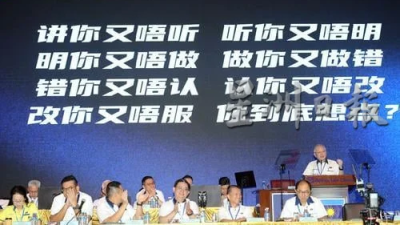Sin Chew Daily
The Parliament has recently tabled the Road Transport (Amendment) Bill 2020 to increase the penalties meted out to drunk drivers.
A driver found to have excessive alcohol content will be sentenced to mandatory imprisonment upon conviction.
The amendment bill will also revise the existing three alcohol test standards to make them stricter. This shows that the government is indeed serious about reducing casualties caused by drunk driving.
Similar measures have been adopted in many other countries. In addition to revising the existing laws, we must also have more consistent and stringent enforcement on the part of the police and JPJ, including more frequent patrols and road blocks in order to effectively address the problem.
Experiences from other countries show that heavier penalties and punishments aside, public education and government propaganda are equally important to produce the desirable results, as prevention is still better than cure.
Road users must be educated that they must refrain from alcohol if they have to go behind the wheel and value their own lives as well as those of other road users.
Such an attitude must be deeply ingrained into the minds of all road users via appropriate channels.
The government must take the lead in public education in addition to law amendment and more stringent enforcement.
Since young we must be educated that alcohol could have a strong bearing on a person's judgment and attentiveness, and driving under the influence of alcohol is extremely dangerous. This can be achieved through school education, suitable teaching materials and kind reminders from the authorities in order to instill in our students driving after excessive intake of alcohol could produce tragic consequences.
No revision of school curriculum is necessary actually. The transport ministry can work with the education ministry to instruct schools to regularly educate the students through classroom or extracurricular activities.
As for kindergarten and primary school children, poster making events could be organized to enhance their awareness, while debates and essay-writing competitions can be held for secondary school students. The concept of the dangers of drunk driving must be instilled in the students since young.
Meanwhile, the transport ministry and the police can deliver regular talks at schools or organize public education events or exhibitions to explain the relevant laws and offer gentle reminders.
Such initiatives must also be suitably promoted in the mass media in order to reach out to a wider section of the society.
A short film created by the transport ministry several years ago was constantly played on the TV to etch into the minds of viewers the horrific consequences of road accidents. While this may not be 100% effective in preventing road accidents, at least it leaves a certain degree of mental impact on the audience.
With far more sophisticated mass media and omnipresent social media, it is hoped that the transport ministry will make the best of social media platforms to timely and extensively convey the message of the dangers of drunk driving to a much larger target audience in collaboration with the power of Internet and user sharing.
While debating the amendment bill in the Parliament, perhaps the transport ministry can consider setting aside public education budget on TV, Internet and print media so that members of the public can have a better idea of the heavier punishments and stricter enforcement under the revised law while learning a lesson on the dangers of drunk driving.
Of course the government can look to private sector businesses, such as bars and pubs to help test their customers' alcohol levels, as well as car-hailing companies to provide their services to drinkers.
The government's public education initiative must be effective enough to enhance self discipline among Malaysian road users and view road safety more seriously.
Only with heavier penalties and effective public education will we be able to successfully prevent tragic road accidents as a result of drunk driving.

ADVERTISEMENT
ADVERTISEMENT


































